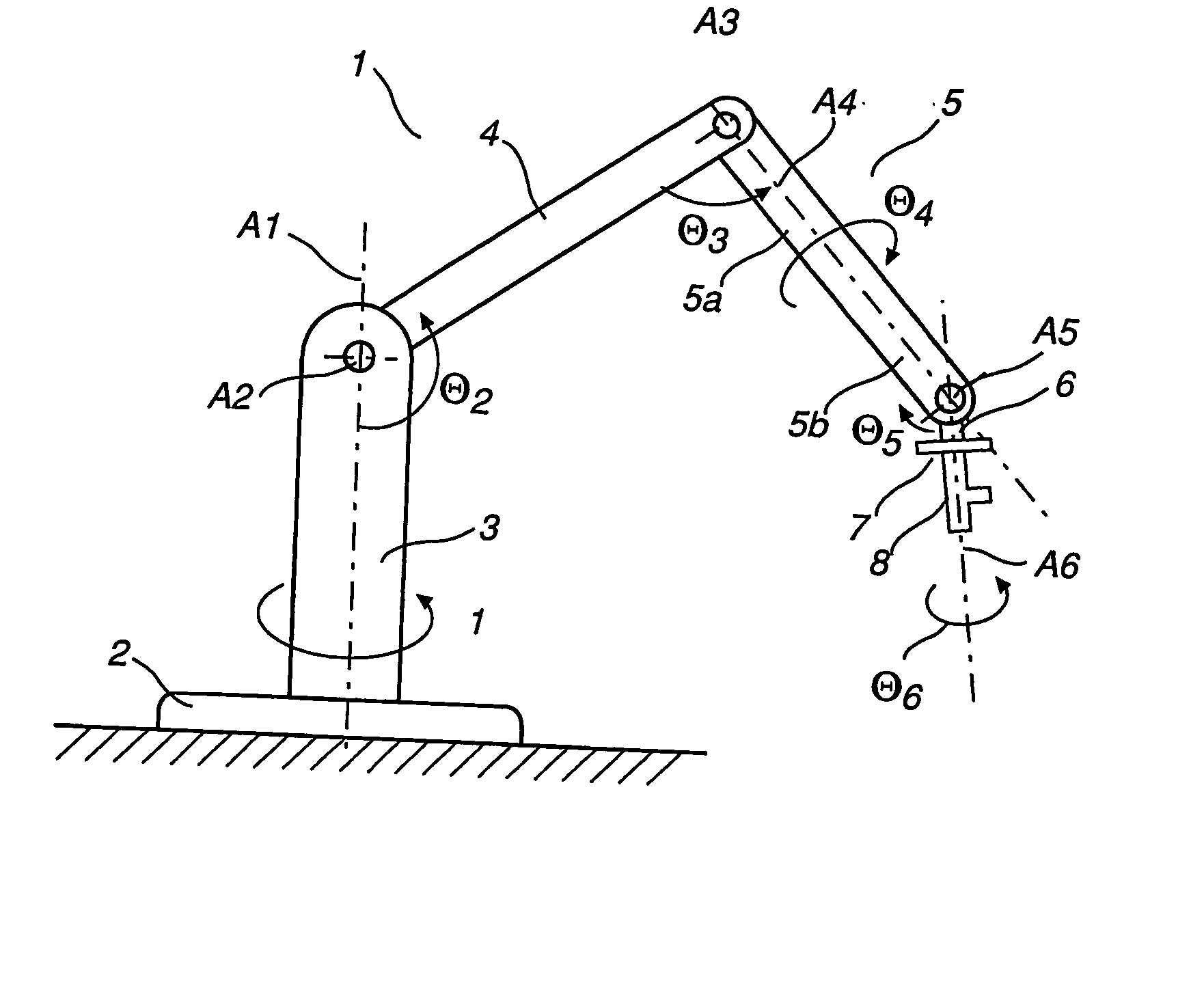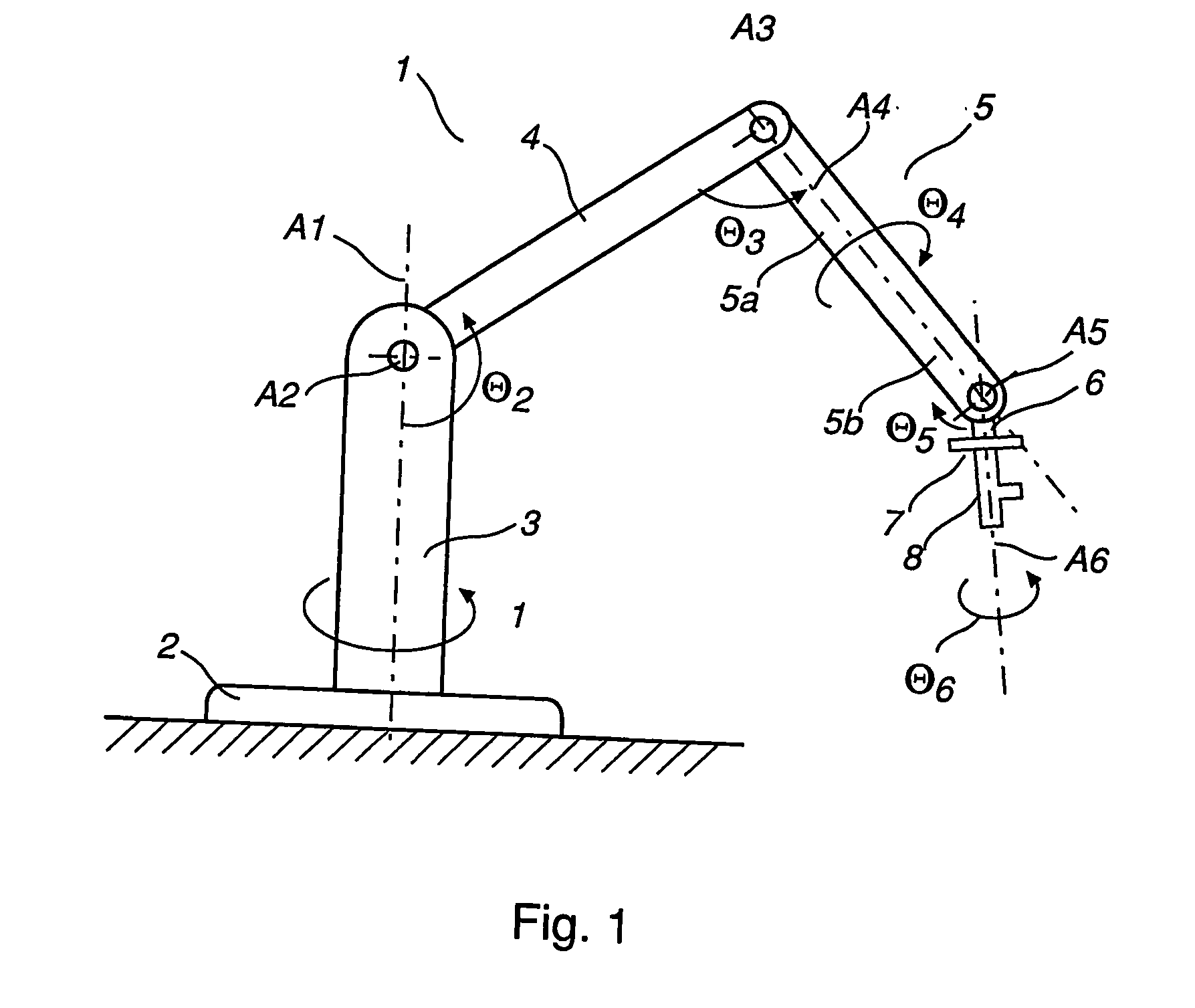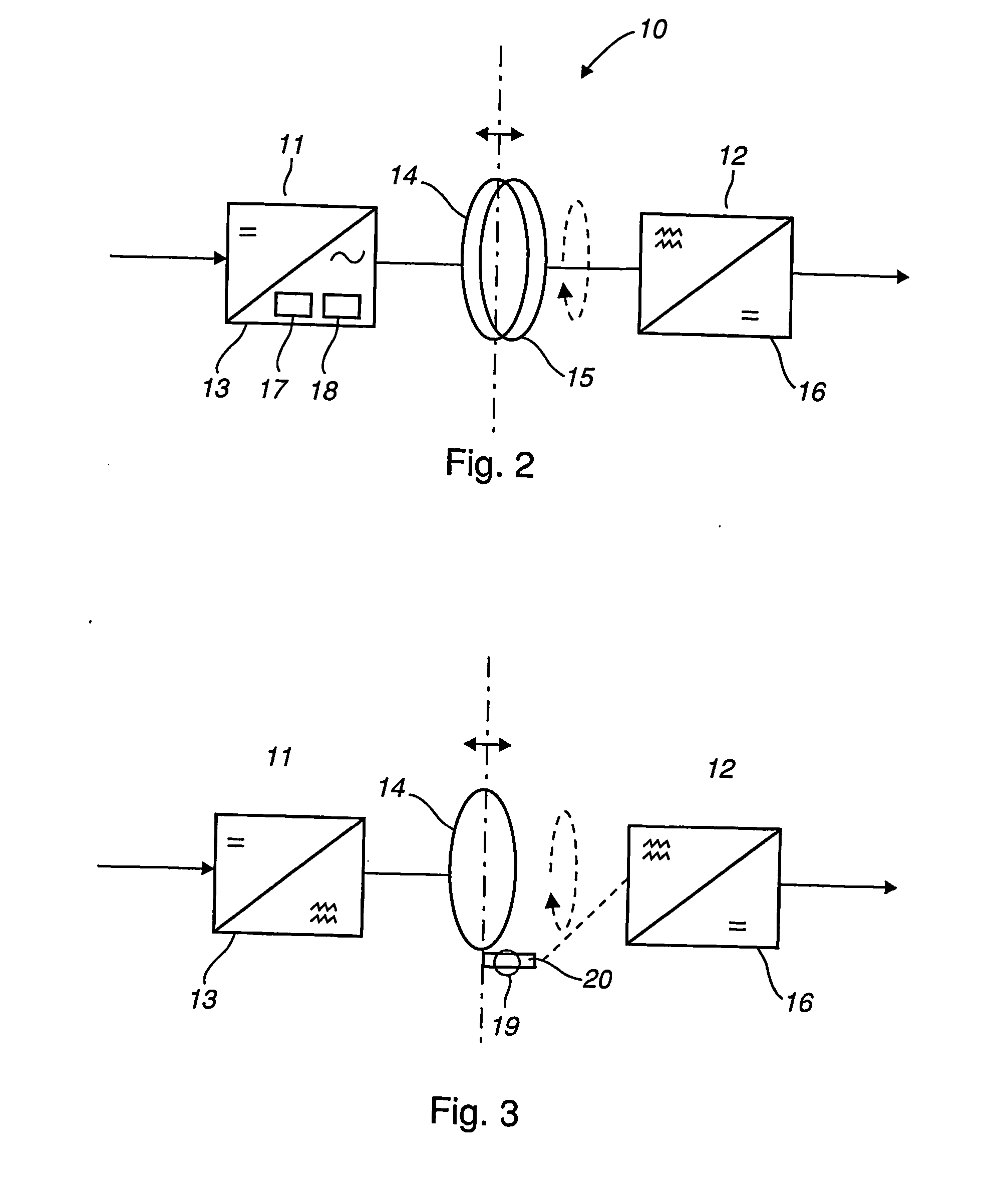Industrial Robot
- Summary
- Abstract
- Description
- Claims
- Application Information
AI Technical Summary
Benefits of technology
Problems solved by technology
Method used
Image
Examples
Embodiment Construction
[0029] An industrial robot 1 according the invention contains a stationary foot 2 which carries a stand 3 rotatably arranged around a first axis A1. The stand carries a first robot arm 4 rotatably arranged around a second axis A2. The first arm carries a second robot arm 5 rotatably arranged around a third axis A3. The second arm 5 comprises an inner arm part 5a and an outer arm part 5b. The inner arm part carries the outer arm part, which is rotatably arranged around a forth axis A4, which is coaxial with the longitudinal axis of the inner arm part. The outer arm part carries a wrist part 6 rotatably arranged around a fifth axis A5. The wrist part carries a hand part or a rotating disc 7, which is rotatably arranged around a sixth axis A6. Finally the rotating disc carries a tool 8 for operation by the robot.
[0030]
[0031] The power supply system 10 according to FIG. 2 comprises a first part 11 and a second part 12. The first part is attached to the industrial robot 1 and the second...
PUM
 Login to View More
Login to View More Abstract
Description
Claims
Application Information
 Login to View More
Login to View More - R&D
- Intellectual Property
- Life Sciences
- Materials
- Tech Scout
- Unparalleled Data Quality
- Higher Quality Content
- 60% Fewer Hallucinations
Browse by: Latest US Patents, China's latest patents, Technical Efficacy Thesaurus, Application Domain, Technology Topic, Popular Technical Reports.
© 2025 PatSnap. All rights reserved.Legal|Privacy policy|Modern Slavery Act Transparency Statement|Sitemap|About US| Contact US: help@patsnap.com



